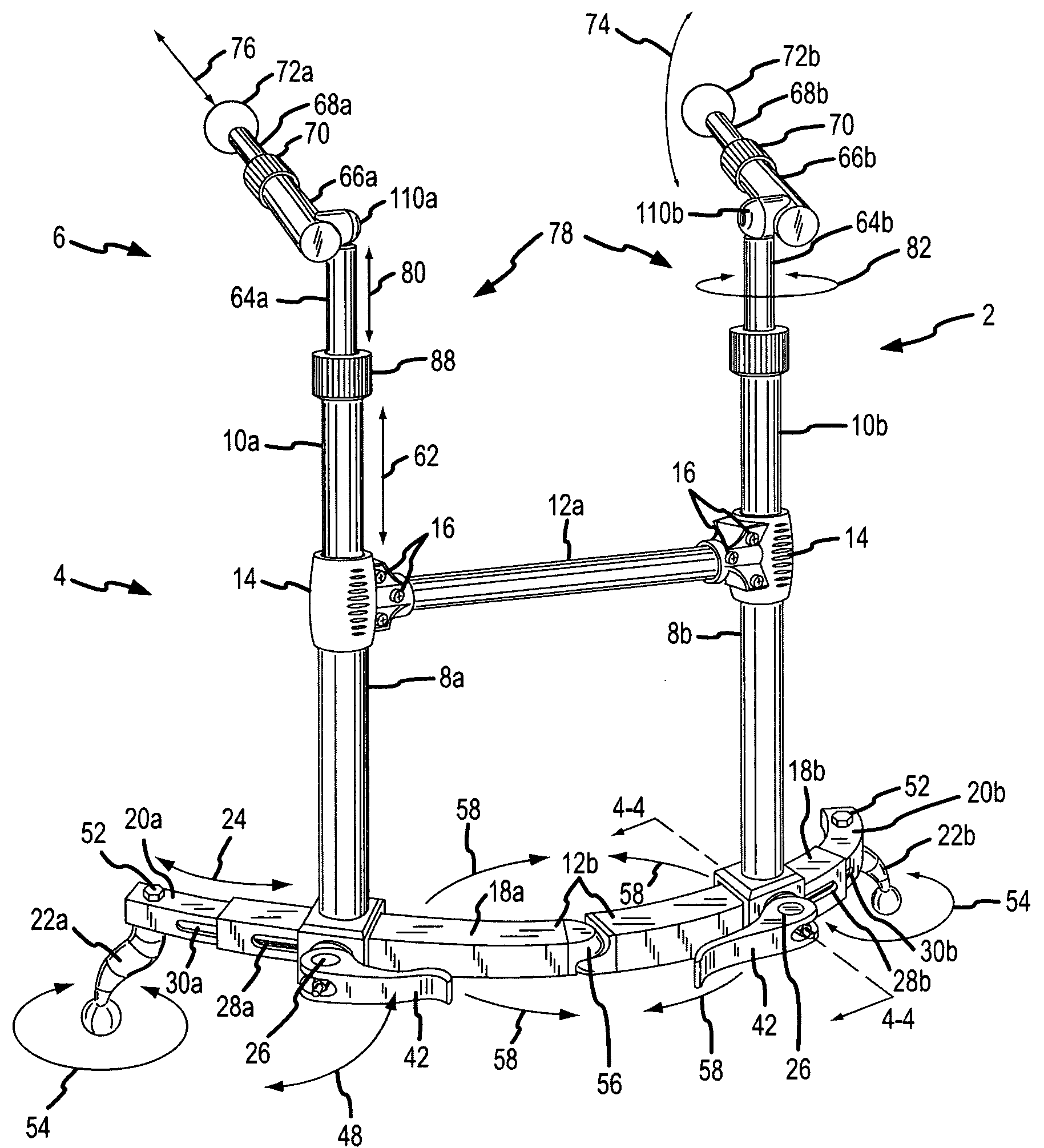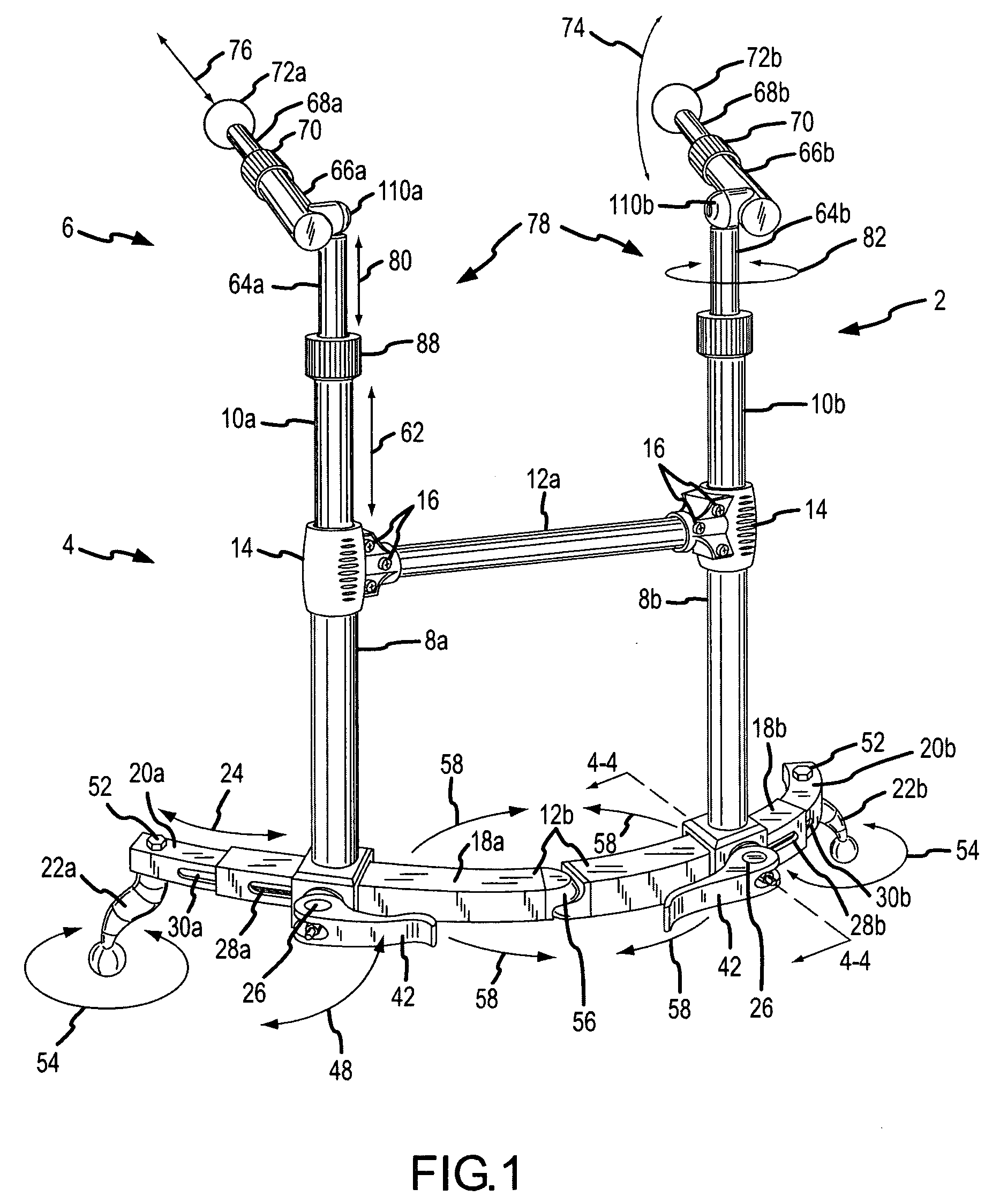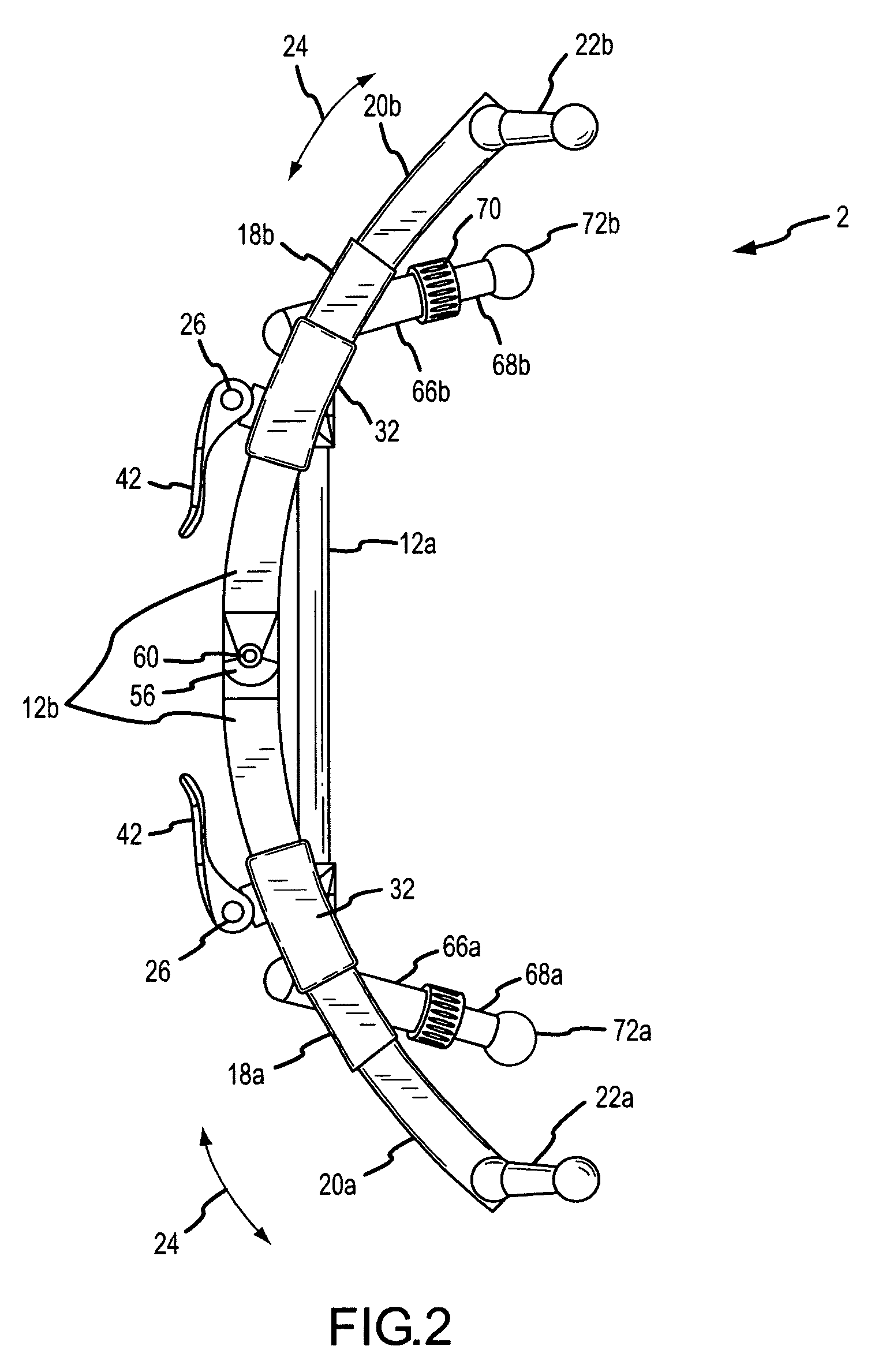System for carrying articles at the front torso of a human being
a human body and front torso technology, applied in the field of front torso carriers, can solve the problems of inconvenient carrying of comparatively light items such as cameras or binoculars, the relatively limited capacity of the human neck and shoulders to carry a heavy load, and the inability to meet the needs of users, so as to maximize the comfort and convenience of users, the effect of maximizing the movement of the front torso and the front torso load
- Summary
- Abstract
- Description
- Claims
- Application Information
AI Technical Summary
Benefits of technology
Problems solved by technology
Method used
Image
Examples
Embodiment Construction
[0091] In describing the system illustrated in the figures, specific terminology is employed for the sake of clarity. The system, however, is not intended to be limited to the specific terminology so selected, and it is to be understood that each specific element includes all technical equivalents that operate in a similar manner to accomplish similar functions.
[0092] Referring now to the drawings, wherein identical numerals indicate like parts, FIGS. 1-4 illustrate an embodiment of a system for carrying articles at the front torso of a human user. A frame 2 has a lower region 4 and an upper region 6. The lower region 4 comprises at least one lower section 8 that is sufficiently rigid to support the weight of at least one article secured upon the lower region 4 and to transfer the weight of the at least one article downward.
[0093] In the embodiment shown in FIG. 1, the at least one lower section 8 comprises a first lower section 8a and a second lower section 8b spaced apart from a...
PUM
 Login to View More
Login to View More Abstract
Description
Claims
Application Information
 Login to View More
Login to View More - R&D
- Intellectual Property
- Life Sciences
- Materials
- Tech Scout
- Unparalleled Data Quality
- Higher Quality Content
- 60% Fewer Hallucinations
Browse by: Latest US Patents, China's latest patents, Technical Efficacy Thesaurus, Application Domain, Technology Topic, Popular Technical Reports.
© 2025 PatSnap. All rights reserved.Legal|Privacy policy|Modern Slavery Act Transparency Statement|Sitemap|About US| Contact US: help@patsnap.com



